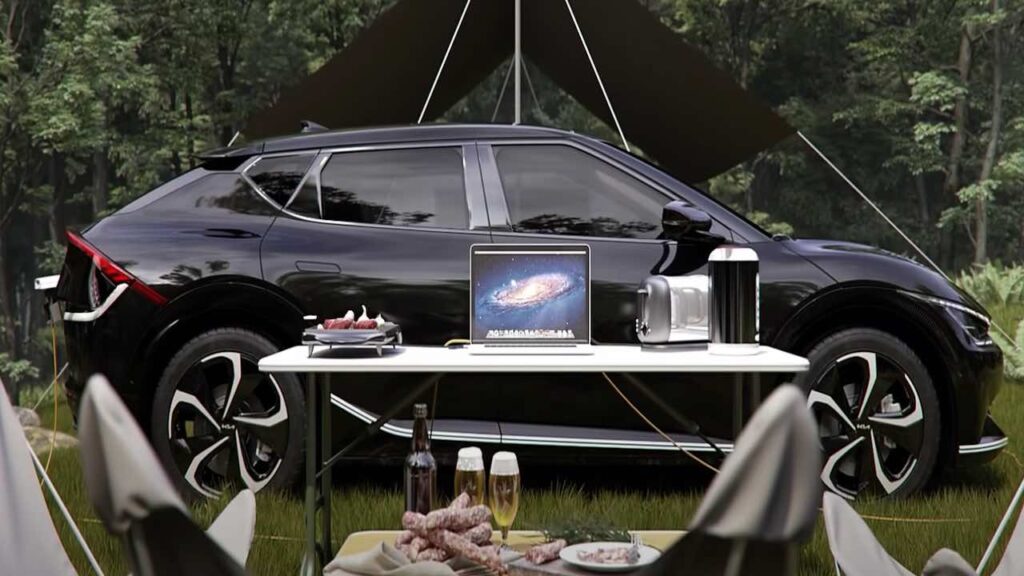Hyundai IONIQ 6 vs Kia EV6 – Specs, Price Comparison
Hyundai Motor Group is on a mission to establish itself as a prominent player in this transition phase from traditional ICE-powered vehicles to EVs and has already grabbed a solid lead with its products. In this blog post, we shall do a Hyundai IONIQ 6 vs Kia EV6 comparison in terms of specs and price. Both these EVs, essentially, come from the same parent company, Hyundai Motor Group. While the IONIQ is an all-electric sub-brand of Hyundai, Kia is its sister organization too. Launched on July 12, 2022, Hyundai IONIQ 6 has become a huge success in the international market. Its production takes place in South Korea at the Asan plant. The production of the Hyundai IONIQ 6 for the USA market will start in January 2023 and its sales will commence in March 2023. You might also like: Cupra Born vs VW ID.3 – Which One Should You Pick? Hyundai IONIQ 6 vs Kia EV6 – Specs Comparison Before we begin, it must be noted that the IONIQ 6 has only been announced in the dual-motor AWD configuration with the larger 77.4 kWh battery pack. The single-motor variant with a smaller battery (53 kWh) will be launched in the coming months. Therefore, we shall compare it to the top trim of the Kia EV6 only. Both these EVs are based on Hyundai’s E-GMP (Electric Global Modular Platform). Specs Comparison Hyundai IONIQ 6 Kia EV6 Drivetrain 2WD/AWD 2WD/AWD Battery 77.4 kWh 77.4 kWh Power 239 kW (320 hp) 239 kW (320 hp) Torque 446 lb-ft (605 Nm) 446 lb-ft (605 Nm) Range 320 miles (515 km) 274 miles (441 km) Acceleration (0-60 mph) 5.1 secs 5.1 secs 350 kW DC Fast Charging – 800 V (10%-80%) 20 mins 18 mins Drag Coeff. 0.21 0.28 Hyundai IONIQ 6 vs Kia EV6 – Specs Comparison While these two will feature identical powertrains, the difference lies in their body types. Whereas the EV6 is a crossover SUV, the IONIQ 6 is an aerodynamically sound electric sedan that Hyundai calls an “Electric Streamliner”. The sheer design will alter the range and efficiency of the IONIQ 6. Therefore, you will be able to squeeze more out of the electric sedan compared to the electric crossover. The extended-range version will be launched later that will have a range of up to 382 miles (615 km). You might also like: Kia EV6 Light vs Wind vs GT-Line – Specs and Price Comparison Hyundai IONIQ 6 vs Kia EV6 – Price Comparison The prices of the Kia EV6 range from $47,000 USD to $58,500 USD for the 2023 model. On the other hand, the estimated prices of the Hyundai IONIQ 6 would lie somewhere between $45,000 USD to $55,000 USD. Hence, there isn’t much to choose between the two in terms of prices. Price Comparison Kia EV6 Hyundai IONIQ 6 Base Trim $47,000 $45,000 (est.) Top Trim $58,500 $55,000 (est.) Hyundai IONIQ 6 vs Kia EV6 – Price Comparison Verdict With the price constraints out of the way, it really boils down to the kind of body one prefers. There lies a clear distinction between the two. If you are someone who loves the rather imposing SUV-ish road presence, the EV6 might do the trick. On the other hand, if you want something a bit more unique with an understated and sophisticated design, the IONIQ 6 electric sedan might make more sense.



